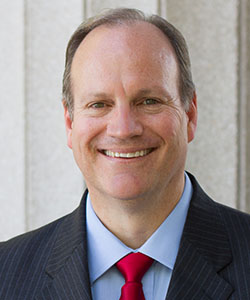By David Duncan for BiolawToday.org.
 In my second year of law school (2L), I was a Biolaw Fellow for the S.J. Quinney College of Law, Center for Law and Biosciences (LABS). In my fellowship assignment, I worked for the Center for Medical Innovation’s Bench-to-Bedside (B2B) program where I assisted six teams of inventors in the process of preserving their intellectual property rights to their medical inventions. I did so by writing and filing a provisional patent application so that they could more easily seek investments to move forward with commercialization of the inventions without fear of losing rights to their inventions by publicizing them. In early April 2016, the dozens of teams of inventors in the Bench to Bedside program all gathered in the Rotunda of the Capitol and presented their inventions to the public. Many of the competitors received one or more awards ranging from $2,000 for several minor awards and escalating to $5,000, $10,000, and even to $15,000 for the grand prize
In my second year of law school (2L), I was a Biolaw Fellow for the S.J. Quinney College of Law, Center for Law and Biosciences (LABS). In my fellowship assignment, I worked for the Center for Medical Innovation’s Bench-to-Bedside (B2B) program where I assisted six teams of inventors in the process of preserving their intellectual property rights to their medical inventions. I did so by writing and filing a provisional patent application so that they could more easily seek investments to move forward with commercialization of the inventions without fear of losing rights to their inventions by publicizing them. In early April 2016, the dozens of teams of inventors in the Bench to Bedside program all gathered in the Rotunda of the Capitol and presented their inventions to the public. Many of the competitors received one or more awards ranging from $2,000 for several minor awards and escalating to $5,000, $10,000, and even to $15,000 for the grand prize
A typical interaction with a team of inventors would begin with a team member reaching out to me as a B2B law fellow. A disclosure meeting would be scheduled where the team members would describe the invention and answer questions I might have about the invention. Even though it is not necessary to file patent claims with a provisional patent application, I usually tried to talk through at least one major claim with the inventors in that first meeting. This helped to ensure that I was on the right track in identifying the key novelties of the invention, and helped me to gain a grasp on the invention’s key terminology. It was also good practice for me to write the claims, so I did.
Often, the teams had some form of “drawings” that they would hand over to me. In some cases, it was photos of a prototype. In others, it was renderings from a 3D model. In most others, it was simply some hand-drawn sketches which I either scanned or recreated as a line-drawing. Whatever the form of the “drawings,” I imported them into Word and added labeling to the elements I intended to describe in the provisional patent application.
After drafting the rest of the claims and specification for that application, I would return the draft to the team for feedback. Once the negotiated changes (not all of the suggestions were appropriate for inclusion in a patent) were incorporated, and the necessary paperwork and approvals completed, I would assist in filing the Provisional Patent Application with the United States Patent and Trademark Office.
The practice of drafting so many (provisional) patents, along with my relevant coursework as a 2L, improved my patent drafting skills immensely. I consider it a fantastic opportunity to have participated as a LABS Fellow for the Bench to Bedside program, and look forward to doing it again in my third, and final, year of Law School.
Dave has a Bachelor of Science degree in Mechanical Engineering from Brigham Young University and a Master of Business Administration degree from Pepperdine. He is in his third and final year at the University of Utah S.J. Quinney College of Law where, in addition to a full class schedule, he is a LABS Fellow who writes provisional patent applications for the Bench to Bedside Program competitors. After law school, he will practice law as a patent attorney at Patent Law Works in Salt Lake City. Prior to law school, Dave had two careers–first as an aerospace engineer designing military cargo aircraft and commercial airliners. His second career was coding commercial desktop and web applications as a software engineer. He has replaced his pre-law-school hobbies of sailing and scuba diving with volunteering in the law school’s pro bono initiatives (PBI), though he did manage to squeeze in a week of both between his second-year final exams and beginning his summer job. Last year Dave served as the student director of the PBI’s Street Law Clinic and is currently the student director of the Expungement Clinic.
